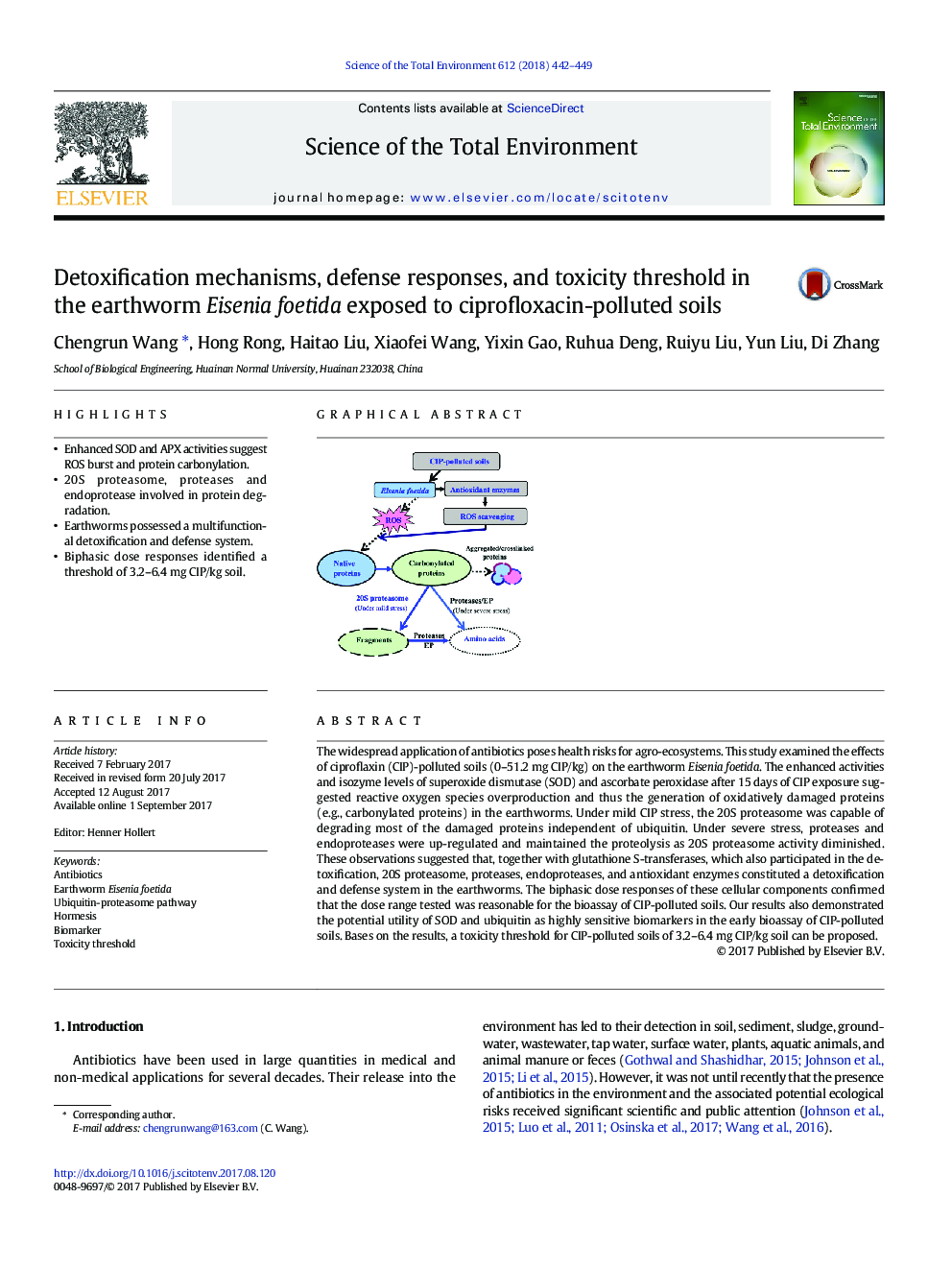| Article ID | Journal | Published Year | Pages | File Type |
|---|---|---|---|---|
| 5749902 | Science of The Total Environment | 2018 | 8 Pages |
â¢Enhanced SOD and APX activities suggest ROS burst and protein carbonylation.â¢20S proteasome, proteases and endoprotease involved in protein degradation.â¢Earthworms possessed a multifunctional detoxification and defense system.â¢Biphasic dose responses identified a threshold of 3.2-6.4 mg CIP/kg soil.
The widespread application of antibiotics poses health risks for agro-ecosystems. This study examined the effects of ciproflaxin (CIP)-polluted soils (0-51.2 mg CIP/kg) on the earthworm Eisenia foetida. The enhanced activities and isozyme levels of superoxide dismutase (SOD) and ascorbate peroxidase after 15 days of CIP exposure suggested reactive oxygen species overproduction and thus the generation of oxidatively damaged proteins (e.g., carbonylated proteins) in the earthworms. Under mild CIP stress, the 20S proteasome was capable of degrading most of the damaged proteins independent of ubiquitin. Under severe stress, proteases and endoproteases were up-regulated and maintained the proteolysis as 20S proteasome activity diminished. These observations suggested that, together with glutathione S-transferases, which also participated in the detoxification, 20S proteasome, proteases, endoproteases, and antioxidant enzymes constituted a detoxification and defense system in the earthworms. The biphasic dose responses of these cellular components confirmed that the dose range tested was reasonable for the bioassay of CIP-polluted soils. Our results also demonstrated the potential utility of SOD and ubiquitin as highly sensitive biomarkers in the early bioassay of CIP-polluted soils. Bases on the results, a toxicity threshold for CIP-polluted soils of 3.2-6.4 mg CIP/kg soil can be proposed.
Graphical abstractDownload high-res image (139KB)Download full-size image
